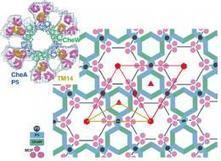Get Started for FREE
Sign up with Facebook Sign up with X
I don't have a Facebook or a X account

 Your new post is loading... Your new post is loading...
 Your new post is loading... Your new post is loading...

Hillary Hawke's curator insight,
December 13, 2012 11:13 AM
Edinburgh scientists have created brain tisuue (from skin cells) from patients suffering from schizophrenia, bipolar depression, and other mental illnesses. They can use the cloned brain tissue to test different medications on them in order to find a cure for these mental illnesses. However, it is not confirmed that this will work. The medication will only be tested on cloned brain cells, it can cause harmful affects to other parts of the body as well. Also, there is no way to tell how the mental illness will progress in different patients, therefore it may not work for everyone. 
Benn Bland's comment,
December 20, 2012 12:18 AM
This is a remarkable find. This technology can lead to understanding illnesses that affects thousands if not millions of people around the world. It also has the potential to be adapted to rebuild cells from other parts of the body which were or still thought to be impossible. Is it possible that one day we may be able to clone back a persons leg or other missing body part potentially as complicated as the eye?
|
|











